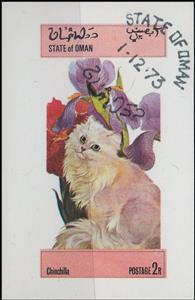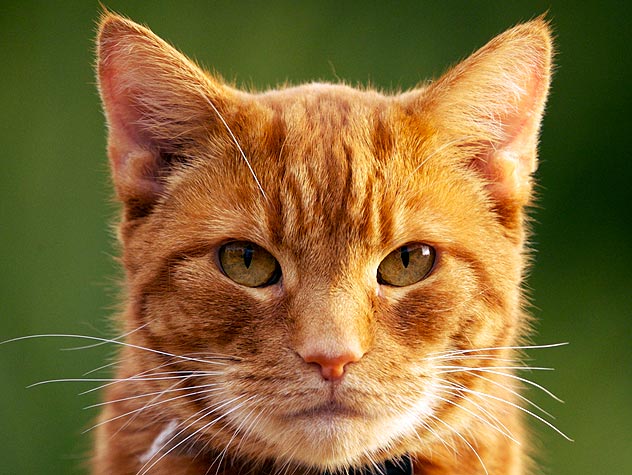Stamp: Chinchilla (Cinderellas 1973)
Chinchilla (Cinderellas 1973)
01 December (Cinderellas ) within release Oman (State of) goes into circulation Stamp Chinchilla face value 2 Omani rial
| Stamp Chinchilla in catalogues | |
|---|---|
| Colnect codes: | Col: OM 1973-15 |
Stamp is square format.
Also in the issue Oman (State of):
- Souvenir Sheet - Skylab face value 2;
- Stamp - Chinchilla face value 2;
|
Data entry completed
50%
|
|
|---|---|
| Stamp Chinchilla in digits | |
| Country: | Cinderellas |
| Date: | 1973-12-01 |
| Perforation: | Imperforate |
| Emission: | Cinderella |
| Format: | Stamp |
| Face Value: | 2 Omani rial |
Stamp Chinchilla it reflects the thematic directions:
The domestic cat (Latin: Felis catus) is a small, typically furry, carnivorous mammal. They are often called house cats when kept as indoor pets or simply cats when there is no need to distinguish them from other felids and felines. Cats are often valued by humans for companionship and for their ability to hunt vermin. There are more than 70 cat breeds, though different associations proclaim different numbers according to their standards.
Cats are similar in anatomy to the other felids, with a strong flexible body, quick reflexes, sharp retractable claws, and teeth adapted to killing small prey. Cat senses fit a crepuscular and predatory ecological niche. Cats can hear sounds too faint or too high in frequency for human ears, such as those made by mice and other small animals. They can see in near darkness. Like most other mammals, cats have poorer color vision and a better sense of smell than humans. Cats, despite being solitary hunters, are a social species and cat communication includes the use of a variety of vocalizations (mewing, purring, trilling, hissing, growling, and grunting), as well as cat pheromones and types of cat-specific body language.
A flower, sometimes known as a bloom or blossom, is the reproductive structure found in plants that are floral (plants of the division Magnoliophyta, also called angiosperms). The biological function of a flower is to effect reproduction, usually by providing a mechanism for the union of sperm with eggs. Flowers may facilitate outcrossing (fusion of sperm and eggs from different individuals in a population) or allow selfing (fusion of sperm and egg from the same flower). Some flowers produce diaspores without fertilization (parthenocarpy). Flowers contain sporangia and are the site where gametophytes develop. Many flowers have evolved to be attractive to animals, so as to cause them to be vectors for the transfer of pollen. After fertilization, the ovary of the flower develops into fruit containing seeds. In addition to facilitating the reproduction of flowering plants, flowers have long been admired and used by humans to beautify their environment, and also as objects of romance, ritual, religion, medicine and as a source of food.


